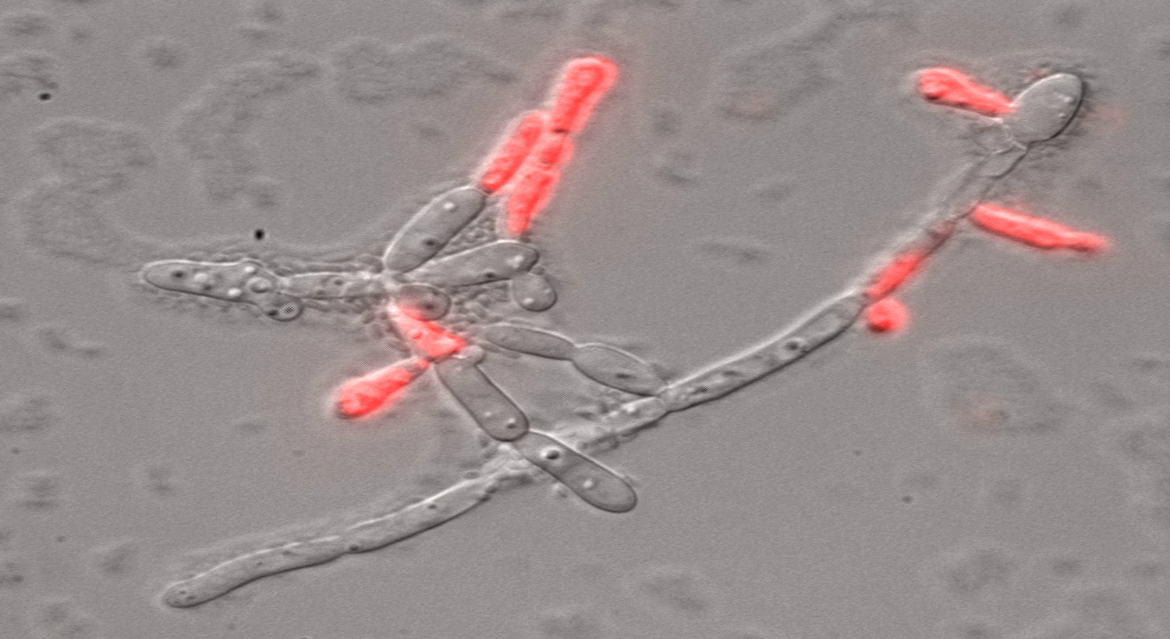Fungal cells targeted by bacteria's 'poison arrows'
Published On Mon 30 Jul 2018 by Jonathan Watson

A deadly weapon used by bacteria to eliminate one another is also used against fungal cells, researchers from the University of Dundee have discovered.
A team from the University’s School of Life Sciences collaborated with experts at Newcastle University and found that toxins delivered by ‘poison arrows’ are used to kill off different kinds of cells that pose a threat to aggressive bacteria.
Using a weapon known as the Type VI secretion system to fire toxic proteins into neighbouring cells, the process allows competing bacteria to eliminate bacterial rivals. However, the Dundee team discovered that the same process is also used to attack fungal cells in mixed microbial communities.
The findings, published in the journal Nature Microbiology, could pave the way for further research into targeting fungal cells that cause infections in humans, according to Dr Sarah Coulthurst from the School’s Division of Molecular Microbiology.
“Bacteria kill one another because they want the space to grow and dominate. It’s been known for a while now that bacteria use the Type VI secretion system to do this, a bit like shooting poison arrows at a rival, but this research has revealed that bacteria is also using the same method against microbial fungi. It’s constant warfare.
“We don’t know whether the bacterium knows what it is fighting against, but it is clear that bacteria have a range of toxins that will kill other bacteria or fungal cells, allowing them to target a broader range of enemies than we previously thought.
“Microbes which can be killed by this bacterial weapon include fungi like Candida albicans, which can commonly cause infections in humans, so understanding how bacteria attack these could be beneficial in developing treatments.
“Our long-term hope is that we can develop new ways to kill or counteract harmful microbes by learning from how they do it to each other.”
The work of the Dundee research team was funded by the Wellcome Trust and the Medical Research Council and involved collaboration with several research groups at Newcastle University.
Dr Coulthurst said that the discovery would offer further insight into how mixed microbial communities functioned.
“The Type VI system is an incredible weapon, with crossbow-like firing events visible under the microscope, but it is not the only system used by bacteria to compete against one another. For example, the majority of antibiotics in use today originally came from chemicals made by microbes competing against each other in soil communities.
“By learning more about how bacteria normally compete with each other and fungal cells, we can use that knowledge to our advantage.”
For media enquiries contact:
Jonathan Watson
Media Relations Officer
University of Dundee
Nethergate, Dundee, DD1 4HN
Tel: +44 (0)1382 381489
Email: j.s.watson@dundee.ac.uk